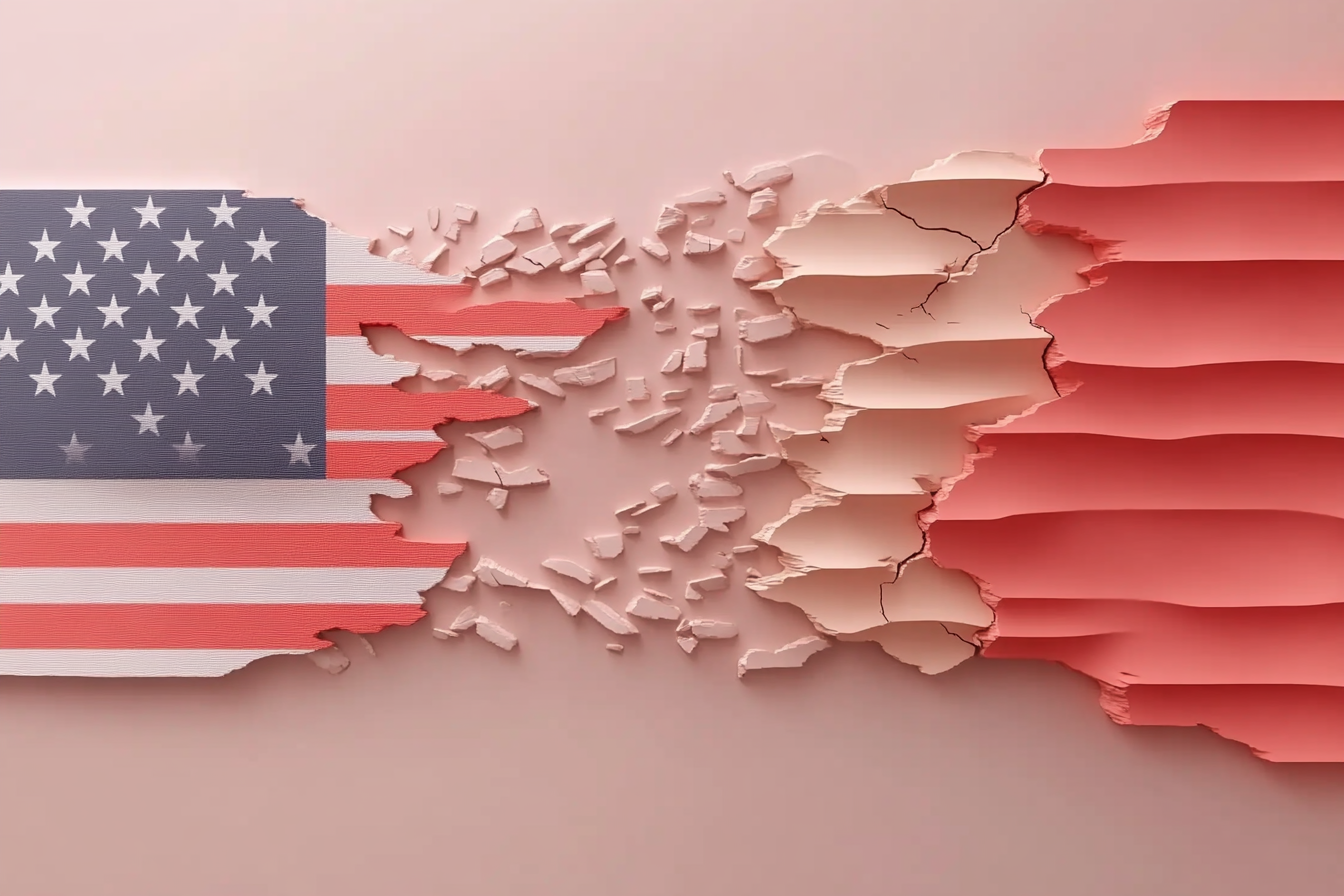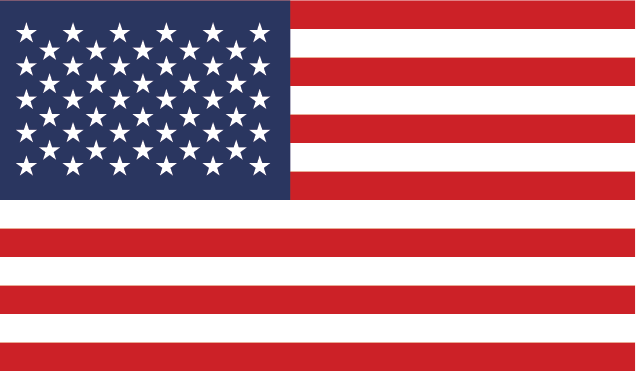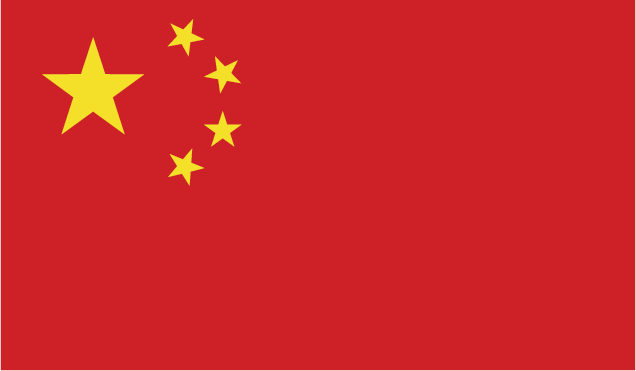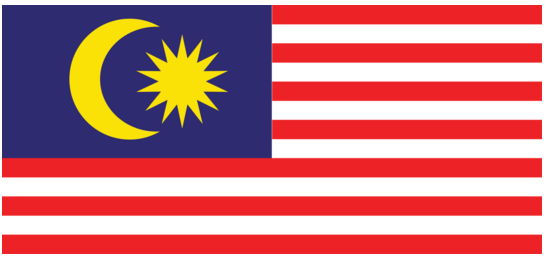
Tariff Impacts on Indonesian Exports to the US
Indonesia US export tariffs
Introduction to Tariff Impacts on Indonesian Exports to the US
The trade relationship between Indonesia and the United States stands as a multifaceted interplay, heavily influenced by the dynamics of tariffs. These import taxes, a pivotal element of global trade, wield significant power in shaping the flow of goods across borders. For Indonesia, the U.S. remains a cornerstone trading partner, with bilateral trade surging to an impressive $34.5 billion in 2023, securing a $12 billion trade surplus for Indonesia1. Yet, the hurdles posed by tariffs on Indonesian exports to the U.S. add layers of complexity, often impacting both their competitive edge and profitability.
This article sets out to unravel the intricate ways tariffs influence Indonesian exports to the U.S. It will spotlight the current tariff framework, examine Indonesia's proactive measures to lower trade barriers via strengthened bilateral cooperation, and analyze the ripple effects of U.S. trade policies. Furthermore, it aims to equip Indonesian exporters with actionable strategies to counterbalance tariff challenges and adapt to an ever-evolving global trade landscape.
Grasping the implications of tariffs is crucial for policymakers and enterprises striving to enhance trade flows between these two nations. As global trade continues to evolve—especially in light of Indonesia's recent integration into BRICS and potential shifts in U.S. trade policy—this analysis provides a critical lens to anticipate the trajectory of Indonesia-U.S. trade relations3.
Current Tariff Landscape: US Tariffs on Indonesian Products
The tariff dynamics between the United States and Indonesia paint a picture of a trade relationship fraught with complex challenges. For years, U.S. import duties on Indonesian goods have created barriers that significantly impact the competitiveness and profitability of Indonesian exporters. Key products, such as shoes, apparel, and other essential commodities, remain at the forefront of this tariff-laden trade environment.
Existing Tariffs on Indonesian Products
Indonesian exports to the U.S. are subject to varying tariff rates based on the product category, often putting pressure on Indonesia's strongest industries. Take shoes and apparel—the backbone of Indonesia’s export portfolio—as a prime example. These items face tariffs as low as a few percent but can soar beyond 20% for more specialized footwear. Such steep duties inflate the costs of Indonesian goods in the U.S. market, stripping them of their price advantage and forcing them to compete against products from countries that enjoy preferential trade agreements with the U.S.
Recent Developments and Proposals
In recent years, discussions around U.S. tariff policies have heated up, particularly during Donald Trump's presidency. Under Trump's leadership, there were suggestions of a universal tariff policy—potentially adding further complications to already strained U.S.-Indonesia trade relations. In response, Indonesia has been diligently exploring strategic countermeasures. These include pursuing bilateral tariff reduction agreements with the U.S., a proactive step aimed at fortifying economic cooperation and breaking down trade barriers.
Impact of Tariffs on Specific Commodities
- Shoes and Apparel: Few sectors feel the sting of U.S. tariffs as much as these. With duties significantly raising the price tags of Indonesian-made clothing and footwear, demand in the U.S. can falter. This domino effect makes it challenging for Indonesian manufacturers to hold their ground against competitors from nations benefiting from more favorable trade terms.
- Electrical and Machinery Products: While not as heavily taxed as textiles or footwear, machinery and electronics remain at risk. Current tariffs are manageable, but any sudden uptick will directly hit Indonesia’s steadily growing exports in these categories.
- Palm Oil and Agricultural Products: Though not saddled with prohibitively high tariffs, these sectors face their own set of hurdles, such as stringent environmental regulations and ongoing trade disputes. These non-tariff barriers, in turn, can dent the global standing of Indonesian agricultural exports, including palm oil.
Future Tariff Landscape
Predicting what lies ahead for U.S. tariffs on Indonesian products is akin to navigating uncharted waters. The Trump administration's inclination toward sweeping changes in trade policies has left much uncertainty in its wake. However, Indonesia’s proactive steps, such as its inclusion in BRICS, and exploration of new trade agreements, reflect a forward-looking strategy to cushion against unpredictable shifts in U.S. policy. The big question remains: can Indonesia skillfully maneuver these negotiations, leveraging its growing economic clout to secure advantageous trade terms in an increasingly competitive global marketplace?
Indonesia's Push for Tariff Reductions with the U.S.
In a bid to deepen economic collaboration and eliminate trade constraints, Indonesia has been actively campaigning for reduced tariffs on its exports to the United States. This initiative couldn’t come at a more critical time—amid a climate shaped by former President Donald Trump's plans for comprehensive tariff policies, which threaten to further strain Indonesia-U.S. trade dynamics. Airlangga Hartarto, Indonesia's Economic Minister, has consistently championed the importance of tariff cuts, framing them as an essential element of Indonesia’s broader mission to fortify its economic ties with Washington1.
Why Reduce Tariffs?
The advantages of tariff reductions for Indonesia are multifaceted. For one, lowering tariffs would make Indonesian products more competitive in the American market. At present, exports like apparel and footwear face steep duties that inflate their prices, placing them at a disadvantage compared to goods from nations with privileged trade deals with the U.S.1. Slashing these tariffs would give Indonesian products a fighting chance, opening the door to higher export revenue, which could translate to economic growth and increased job opportunities back home.
Another key benefit lies in fostering a more predictable trade environment. Trump-era unpredictability in U.S. trade policies has left many Indonesian exporters grappling with uncertainty. A bilateral agreement outlining favorable tariff reductions could establish a more stable framework for commerce, potentially encouraging broader trade and more significant investment flows between the two nations2.
Clearing the Roadblocks
But achieving these reductions won't come easy. One obstacle stems from the intricate web of U.S. domestic politics, where trade policies are often shaped more by internal power dynamics than international partnership goals. Trump's administration, for instance, demonstrated a strong inclination to wield tariffs as leverage in trade negotiations—a strategy that could starkly complicate Indonesia’s path to securing favorable terms1.
Furthermore, Indonesia's recent BRICS membership adds a new layer of complexity to its diplomatic dance. The group's movement toward promoting local currencies for trade—potentially sidelining the U.S. dollar—may not sit well with Washington. Such developments could invite retaliatory actions from the U.S., creating additional friction in trade discussions3. Striking a balance between allegiance to BRICS and the pursuit of robust U.S. trade relations will require deft economic and political maneuvering.
Mapping Out a Path Forward
For Indonesia to navigate these choppy waters successfully, playing to its strengths will be paramount. The country could identify key industries where it holds a clear advantage—textiles and palm oil come to mind—and leverage those as negotiation anchors2. Moreover, diversifying trade partnerships would add a layer of resilience against over-dependence on the U.S. market. Strengthening relationships within the BRICS framework or forging new agreements with other global players might provide Indonesia a broader safety net3.
In summary, Indonesia’s push for tariff cuts with the United States represents a bold and strategic step toward enhancing bilateral trade and spurring economic growth. While political headwinds and global financial dynamics present challenges, the rewards—a stronger foothold in the U.S. market and a more reliable trade framework—make the effort worthwhile. By skillfully leveraging its strengths and broadening its economic alliances, Indonesia stands poised to secure a stronger position in the rapidly evolving global trade arena.
Impact of US Trade Policies on Indonesian Exports
The ripple effects of U.S. trade policies on Indonesian exports are as intricate as the shifting sands of global geopolitics. Indonesia's recent alignment with the BRICS bloc has added a new dimension to its trade equation with the U.S., creating both opportunities and obstacles in the flow of goods between the two nations.
Direct Impacts: Tariffs and Trade Agreements
U.S. tariffs on Indonesian exports have been a persistent hurdle, particularly for key industries like footwear, apparel, and machinery. These tariffs inflate prices, often leaving Indonesian products at a disadvantage against those originating from countries with preferential trade agreements with the United States1. This longstanding issue has created significant pressure on Indonesian exporters to remain competitive in a high-stakes market.
In response, Indonesia has been advocating for a bilateral free-trade agreement (FTA) with the U.S., positioning it as a lifeline to lower tariffs and fortify bilateral trade relations2. However, negotiations often stall as Washington has a history of leveraging tariffs in trade talks, a tactic notably employed during the Trump administration1.
Indirect Impacts: BRICS Membership and Global Trade Dynamics
Indonesia’s voyage into BRICS waters ushers in another layer of complexity. The bloc's push to embrace local currencies in trade challenges the U.S. dollar's supremacy—an initiative that Washington could perceive as a direct threat3. Such moves carry the risk of eliciting economic reprisals, including tariffs, which could hurt Indonesia’s trade with the U.S. market.
Yet, for Indonesia, BRICS membership is not without its appeal. It provides a golden opportunity to diversify trade relationships, source affordable energy from Russia, and carve out new export channels in emerging BRICS economies3. While the U.S. has hinted at imposing punitive tariffs of up to 100% on BRICS members should a rival currency materialize, Indonesia’s strategists believe their country's economic importance and pivotal role in Asia-Pacific geopolitics could temper Washington’s actions1.
Economic Implications for Indonesia
The stakes are high for a nation like Indonesia, which enjoys a $16.8 billion trade surplus with the U.S., underscoring the latter’s pivotal role in its export-driven economy2. Any significant alteration to the current tariff structure would deal a heavy blow to Indonesian exporters in sectors such as textiles, machinery, and palm oil3.
Recognizing these risks, Indonesia has begun casting a wider net. By fostering alternative markets and leveraging BRICS membership, it hopes to buffer its economy from potential shocks tied to dependence on U.S. trade3. These steps reflect a forward-looking approach to sustaining growth amid shifting global power dynamics.
Strategies for Mitigation
Indonesian businesses have a toolkit of strategies they can deploy to weather the turbulence posed by U.S. trade policies:
- Diversify Export Markets: Broadening trade outreach beyond the U.S. can reduce over-reliance on a single market. Membership in BRICS opens doors to fast-growing economies such as China and India, offering fertile ground for expanding trade ties3.
- Streamline Supply Chains: Reducing production and logistics costs while ramping up quality can help exporters remain competitive—even under higher tariffs. Investing in manufacturing innovations and operational efficiency are crucial steps forward2.
- Capitalize on Trade Agreements: Actively pursuing bilateral or multilateral trade deals can unlock preferential market access, ease tariff burdens, and introduce much-needed stability in trade transactions2.
By embracing these strategies, Indonesian exporters can skillfully navigate U.S. trade policies’ intricacies, ensuring they remain a force to be reckoned with on the global economic stage.
Strategies for Indonesian Exporters to Mitigate Tariff Impacts
Navigating the labyrinth of U.S. tariffs is no easy feat for Indonesian exporters. Yet, amid the challenges lies opportunity. By employing strategic approaches, Indonesian businesses can mitigate the effects of these tariffs and thrive in global markets.
Diversifying Export Markets
Perhaps one of the sharpest tools in the arsenal, diversifying export markets allows Indonesian exporters to hedge their bets. By expanding their presence beyond the U.S., they can reduce dependency on a single market and build resilience against trade shocks. Membership in the BRICS bloc creates promising avenues to tap into powerhouse economies like China and India, where demand is soaring3. With this diversification, businesses can shift away from vulnerability and instead seize growth opportunities in burgeoning markets—where risk disperses and horizons widen.
Streamlining Supply Chains
To stay competitive in tariff-laden territory, businesses must streamline supply chains like seasoned tacticians. Lowering production costs while boosting product quality is not a luxury; it’s a necessity. By investing in cutting-edge manufacturing techniques and operational efficiencies, Indonesian exporters can balance the scales. From adopting modern technologies to make production leaner to optimizing logistics for faster, more economical delivery, every tweak matters. Enhanced quality standards not only cater to global consumer expectations but also maintain appeal in high-stakes markets like the U.S.2. These moves can mean the difference between surviving obstacles and thriving despite them.
Capitalizing on Trade Agreements
Leaning into trade agreements is another game-changing strategy. When Indonesia actively pursues trade deals—whether bilateral or multilateral—it unlocks doors to reduced tariffs and streamlined access to key markets. For example, ongoing efforts to establish a bilateral free-trade agreement (FTA) with the U.S. bring the promise of lower duties and reinforced trade relations2. By leaning into these agreements, Indonesian exporters can secure opportunities that level the playing field and pave the way to long-term stability on the global stage.
Enhancing Product Competitiveness
Indonesian exporters can’t just compete—they must excel. Enhancing product competitiveness is the linchpin of that effort. It’s not just about building products that meet the bar; it’s about surpassing it. By aligning with U.S. consumer trends and regulatory standards, Indonesian businesses can cement their footprint and expand market share1. Moreover, investing in research and innovation allows them to craft unique, high-value products that are less prone to tariff disadvantages. In a crowded marketplace, differentiation is king, and those who innovate stand out.
Building Strategic Partnerships
When the winds of trade shift unpredictably, strategic partnerships often become the anchor. Indonesian exporters can forge powerful alliances with U.S. businesses, gaining insider insights into market dynamics while navigating the maze of trade policies. Such collaborations open pathways to knowledge exchange, improve supply chain effectiveness, and unlock fresh market opportunities2. These partnerships do more than just weather storms—they foster enduring relationships less swayed by short-term policy swings.
By embracing these calculated strategies, Indonesian exporters can blunt the blow of U.S. tariffs and carve a path to lasting success. In an era brimming with global competition, resilience and adaptability are no longer optional—they are the keys to transformation and triumph.
Conclusion: Future of Indonesia-US Trade Relations
As Indonesia and the U.S. navigate the intricate landscape of their trade partnership, several pivotal factors are set to define the road ahead. Indonesia’s recent induction into BRICS introduces a host of possibilities, juxtaposed with notable challenges, particularly as the bloc contemplates alternatives to the U.S. dollar in trade transactions. This strategic pivot could spark tension with the U.S., especially given former President President Trump's pointed threats to impose hefty tariffs on BRICS nations pushing for a rival currency3.
Challenges notwithstanding, Indonesia remains steadfast in its commitment to strengthening economic ties with the U.S. through bilateral initiatives and tariff reductions. These efforts are designed to bolster the competitiveness of Indonesian goods in the American market while fostering a more resilient and cooperative trade environment1. Yet, navigating this path will demand skillful diplomacy, particularly in light of the U.S.’s propensity to leverage tariffs as a negotiation tactic2.
Looking into the horizon, Indonesia’s strategic location in the Asia-Pacific and its burgeoning economic clout may act as a moderating force on U.S. policy decisions. Moreover, Indonesia’s ability to diversify its economic alliances—through BRICS and other global partnerships—will serve as a crucial buffer against potential trade disruptions with the U.S.3. As the global trade landscape continues to evolve, Indonesia’s forward-thinking strategy to secure advantageous trade agreements and tap into wider markets will be instrumental in shaping the next chapter of Indonesia-U.S. trade relations.
Discover the Power of PONGO TECH in Enhancing Indonesian Exports
Pongo's Cutting-Edge E-Commerce Solutions
PONGO TECH offers state-of-the-art e-commerce live streaming and digital marketing services that can complement the article's focus on increasing Indonesian exports to the US. By leveraging live streaming platforms, PONGO enables Indonesian businesses to engage in dynamic sales presentations and direct consumer interactions that enhance online visibility and access to international markets. This approach is especially beneficial for exporters looking to penetrate the US market more effectively.
Why Partner with PONGO TECH?
PONGO TECH stands at the forefront of digital marketing in Southeast Asia, recognized as a TikTok official service provider with a robust network of influencers and a suite of services tailored to elevate brand presence. Our expertise in managing live streaming events on major platforms, including TikTok and Lazada, allows companies to reach audiences directly and efficiently. We’ve successfully worked with renowned brands like Haier and Xiaomi, showcasing our capability to propel businesses on a global scale.
Solving Your Export Challenges
In the context of US tariffs on Indonesian products, PONGO TECH’s data-driven strategies can help Indonesian exporters navigate these challenges by providing valuable consumer insights and optimizing marketing campaigns to target US markets effectively. Our services do not just mitigate tariff impacts; they transform them into opportunities by enhancing brand visibility and engagement through interactive, real-time platforms that captivate audiences.
Ready to Elevate Your Brand? Contact Us!
Transform your business today and conquer new markets with PONGO TECH. Explore how our innovative solutions can help your export business thrive in dynamic global landscapes. For more information on how we can partner together, reach out to us through our contact page: Contact Us. Let's craft compelling narratives that resonate with your target audiences and achieve your cross-border trade goals.
 English
English 



